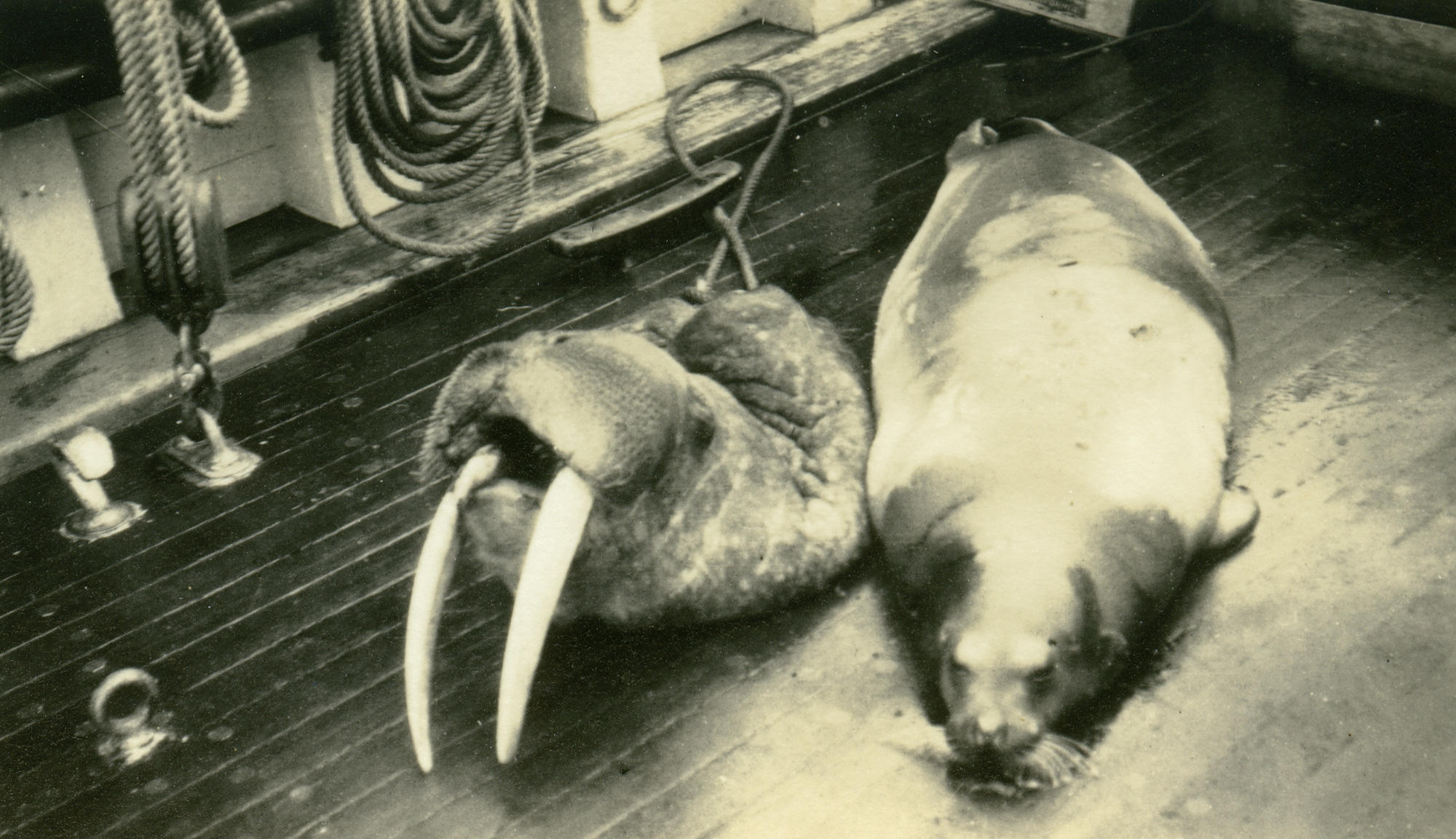In the nineteenth century, a poor man seeking adventure could take a job on an American whaling ship, a dangerous and not always lucrative undertaking. A typical expedition might sail south to the Caribbean, around Cape Horn, out to Easter Island and Hawaii, and then north to Alaska before returning to New England three or four years later. The pay was uncertain because if a crew did not secure a sufficient amount of whale oil in that time, everyone onboard would be in debt to the ship’s owners upon their return. Given the vagaries of the industry, it’s not surprising that some men, looking to earn extra cash, would periodically go ashore and hunt animals for furs, skins, or ivory.
This year, a team of Columbia researchers led by Joshua Drew, a lecturer in the Department of Ecology, Evolution, and Environmental Biology, published a quantitative assessment of the non-cetacean kills made by Yankee whalemen. The study, which is based on his team’s analysis of dozens of ship logbooks, shows that the ecological damage wrought by the American whaling industry extended far beyond the decimation of certain whale species. Walruses on the northern coast of Alaska, for example, were killed en masse when whaling ships began frequenting the region in the 1850s.
“The men were mainly interested in the walruses’ ivory tusks at first,” says Drew. “But they soon discovered that they could also render their blubber into a cheap substitute for whale oil.”
Hunting was so extensive, the logbooks indicate, that by the late 1880s whalemen passing through the region could no longer find any walruses. As a result, they shifted their attention to killing and skinning seals, polar bears, reindeer, caribou, rabbits, and foxes.
Drew’s paper, which appeared in the journal Ecology and Evolution, grew out of a midterm project that he assigned to undergraduates in his Historical Ecology course. The course teaches students to use unconventional sources of data to ascertain how people in the past affected their natural environment. In this case, the data came from a collection of whaling records, representing seventy-four voyages between 1846 and 1901, recently digitized by Massachusetts’s New Bedford Whaling Museum. The logbooks, which were typically produced by a ship’s first mate, contain surprisingly detailed accounts of their crews’ daily activities.
“Many of the logbooks contain descriptions of every single animal the crew killed, often with little drawings to depict species the men hadn’t seen before,” says paper coauthor Elora López ’15CC, who is now a graduate student at Stanford. “We spent weeks skimming through them.”
Studying the hunting habits of nineteenth-century whalers gives scientists a clearer picture of the wildlife that inhabited particular places before settlers arrived. And this, Drew says, helps preservation efforts that aim to restore human-disrupted ecologies to their original states.
“Some islands in the Arctic that are thought to be pristine were actually hunted by the whaling crews,” says Drew. “Our study suggests that the scientists’ current baselines for some species in the region could be too low.”




